World's Prettiest Castle Towns
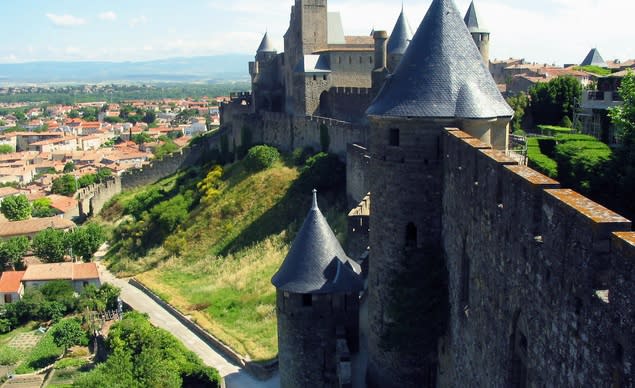
MORE AT BUDGET TRAVEL
What does a fairy-tale Renaissance palace in Italy have in common with a fortress in South Korea? Both are surrounded by communities that are just as intriguing as the castles themselves. Here we bring you the 10 best town-and-crown day trips in the world.
Carcassonne, France
The beauty of Carcassonne is in the details. The well-restored Romanesque fortress city in southwestern France is known by the locals simply as La Cité. The castle's crenellated walls punctuate the sky, and the double line of ramparts looks wonderfully forbidding. The cone-shaped, slate-roofed towers are postcard-perfect. The town's stone streets have been populated since the fifth century. Carcassonne sits a mere one-hour drive from the Mediterranean Sea, meaning it's thousands of miles from Paris in both distance and attitude. It's an unexpected gastronomic and artistic hotspot, with restaurants dishing up modern takes on classical French cuisine, such as cassoulet with partridge, and a neoclassic Musée des Beaux Arts, which stands out for presenting masterworks by Courbet, Chardin, and Ingres, among others.
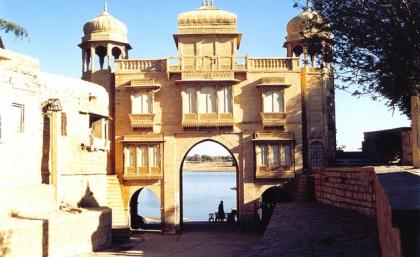
Jaisalmer, India
About 470 miles west of Delhi looms what is said to be the world's only continuously occupied fort town, Jaisalmer, India. Rajput warriors and Jain merchants founded the so-called Golden City in 1156 and—unlike many fortress communities—it was never abandoned. Jaisalmer Fort rises nearly 25 stories off the flat, seemingly endless floor of the Great Thar Desert in western Rajasthan. Its 99 bastions were constructed out of yellow bentonite sandstone—giving it the appearance of a massive, intricately carved, sand castle. Around the flourishing town, countless temples and mansions stand out for their Technicolor red-, indigo-, and yellow-dyed walls typically decorated with lace-like carvings.

The unique mix of Islamic minarets, European buttresses, and pebble-stone mosaic pavements in the ancient city of Rhodes makes it look like a clash of cultures—A Knight's Tale meets a 17th-century Turkish village. Indeed, the town is located at the very heart of the crossroads between the Middle East, Europe, and Africa, and its varied architecture reflects all of those influences. Within the city's thick sandstone and limestone walls, you'll find the Palace of the Grand Masters, built by crusading knights in the 14th century, alongside a candy-striped mosque, a Byzantine museum, and a Muslim library—all legacies from the time of Turkish rule. Today, many of Rhodes's Greek residents are shopkeepers who sell honey produced by the island's many beekeepers; others craft necklaces and souvenirs made from shells cast ashore.

Naganeupseong, South Korea
South Korea may not leap to mind as a hotbed of castles, but in fact the country is flush with fortress towns built to thwart Japanese pirates. Instead of Braveheart-style stone fortresses, however, in Korea castles resemble elaborate pagoda-type buildings, surrounded by thick stone walls. The best preserved of these is in the town of Naganeupseong, a three-square-mile gem nestled in a valley beneath some low-lying mountains near the southwestern city of Suncheon. As remarkable as it is unpronounceable, Naganeupseong (nagan means "safe and pleasant" and seong means "castle") was built in 1397 and still has a couple hundred residents living in its hub of 30 or so thatched-roof adobe houses. Locals work in tile-roofed shops linked by pencil-thin stone alleyways, all of which lead to the town's focal point: the Nakpung-ru Castle. Most weekends, visitors can catch a changing-of-the-guard ceremony in front of its pagoda-style entrance, and every October, the town draws about 200,000 tourists to its Namdo food festival, where regional favorite dishes, such as sanchae bibimbap (a bowl of warm rice topped with vegetables), are served and traditional music is played on the 12-string gayageum.

Segovia, Spain
Even if you've never set foot in Spain, the Alcázar Castle will likely look familiar to you. It's believed to be the inspiration for the original Cinderella Castle in Disneyland, in Anaheim, Calif., and it has appeared in countless postcards and photos since. The original 14th-century structure was destroyed by a fire, but its cylindrical turrets, peaked roofs, and soaring stone walls were faithfully re-created in the 1880s, with marvelously designed murals inside depicting famous battle scenes. The Alcázar is surrounded by a deep moat and looms over the small, hill town of Segovia, which is connected by a drawbridge. The walled community itself is a faithful re-creation of the bright side of Middle Ages life, with crafts shops and beer halls done up in true retro style. Segovia also has an amazingly well-preserved Roman aqueduct with 166 graceful arches and the famous Vera Cruz church, which was consecrated in 1208 by the Knights of Templar to house a relic of the True Cross.
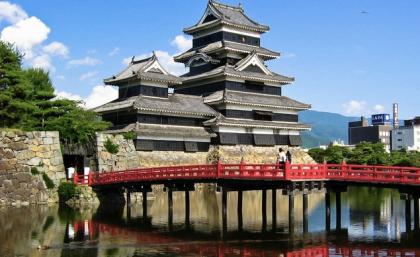
Matsumoto, Japan
Matsumoto-jo is a compound set in the shadow of snow-topped Mt. Hotaka in central Japan. It was built in 1592, making it the country's oldest surviving wooden castle. The main tower is surrounded by pagoda-like tiers, which are painted black and white, and a moat teeming with colorful koi carp. The castle was built on top of a series of mazelike passageways, designed to disorient and trap intruders. Visitors today, however, are welcomed and given tours. Outside the castle walls, Matsumoto seems designed for pedestrians, with wide, tree-lined boulevards tracing the breezy Metoba River. You can also explore the fascinating merchant—or nakamachi—district, a hub of low-slung, tile-roofed buildings where local artisans sell crafts and handiwork, such as furniture made without any nails.

Louisbourg, Canada
Set on the Atlantic Coast of Cape Breton Island in Nova Scotia, Louisbourg began life peacefully enough in 1713 as a fishing port. But when the Anglo-French struggle for Canada began a few years later, the French colonists started building a series of stone city walls, transforming the sleepy village into a massive fortress. Today, the entire town is a national historic site, crawling with visitors, historical re-enactors, and—some say—more than its fair share of resident ghosts. There's a phantom sea captain who's said to haunt the ramparts that overlook Louisbourg's pretty harbor; there's the nurse known to walk among the remains of the old hospital; and there's the mischief-maker who causes trouble by the fort's coal-fired hearth, where white-aproned bakers make fresh bread every day for visitors. Just outside the bastion's walls is the Louisbourg Playhouse, which presents traditional colonial dance performances every day during the summer months.
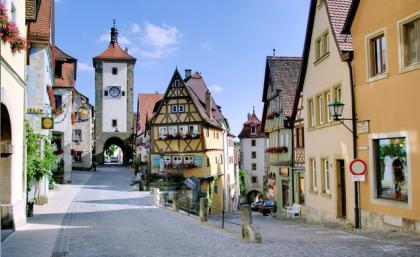
Rothenburg ob der Tauber, Germany
Germany's so-called Romantic Road—which slices north to south through the southern German state of Bavaria—earned its name for its string of stunning castles. But most of the region's bastions are stand-alone tourist attractions, not thriving municipalities. A charming exception is Rothenburg ob der Tauber, a red-walled town set up on a hill above the Tauber River. It has all the pastoral views and scenery of the Romantic Road's other castle stops yet has a strong civic pulse, too. Walt Disney was so taken by the town, in fact, that he used it as inspiration for the village in the movie Pinocchio. An earthquake destroyed the castle's main tower in 1356, but the town's red-roofed medieval and Renaissance houses have endured for centuries and were fully restored after World War II. Visitors can tour the castle's stone towers—protected beneath covered walkways—and stop by its base, where crafts shops sell everything from antique clocks to handmade garden gnomes. Cuisine is celebrated here in a way it isn't in larger German cities like Frankfurt or Berlin, let alone in castle canteens elsewhere. You may come here for the shining armor—but you'll return for the delicious renditions of Bavarian comfort foods (more spätzle, anyone?).
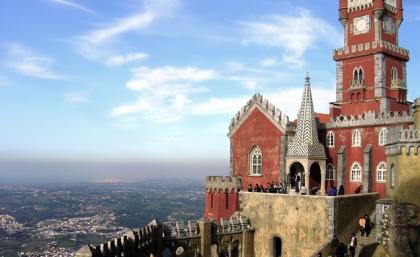
Sintra, Portugal
Sintra is like the one-stop shop for castle lovers, with not one, not two, but three gorgeous castles. This medieval stronghold town is so beautiful it was called Glorious Eden by the British poet Lord Byron. The town's focal point, Sintra National Palace, is distinctive for its whimsical interiors: columns twisted like barley, an Arab-style courtyard situated around pretty fountains, and glazed tile work known as azulejos. Beyond the town's fortress walls—but still within walking distance—Pena National Palace, with its cupolas, minarets, and lookout towers in cherry, lemon, and white hues, stands on a hilltop overlooking a green forest. On another nearby hill, a once-proud Moorish castle lingers in romantic ruins. In between, the old town of Sintra has a mix of Gothic, Renaissance, and art nouveau homes, not to mention many stone-wall shops selling authentic antiques, wine, and paintings—all of this framed by a lushly forested seaside national park.

Palmanova, Italy
Founded in 1593 as a stronghold of the Venetian Republic, this UNESCO World Heritage town was built in a unique, 18-sided octadecagon shape. When viewed from above, the fortress community looks like a delicately made paper snowflake, with streets radiating out of the structure like sunbeams. Tucked into a valley with a lagoon running into the Adriatic Sea, the land surrounding Palmanova yields high-quality Chardonnay, while the local waters are stocked with mullet, sea bass, and other delicious fish. In town, look out for the symbol of a leafy bough, or a frasca, hanging outside of restaurants to pinpoint ones serving regionally sourced food, such as the classic Venetian dish baccalà, made with dry-salted cod. At night, the city's earth-and-stone defensive works are lit up like a movie set.
See more of the World's Prettiest Castle Towns


